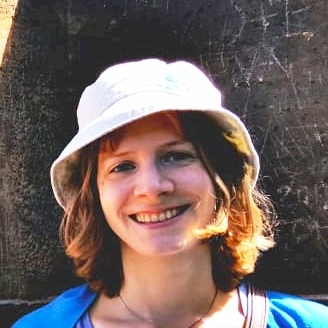| University | University of Groningen (UG) |
| Institute and/or group | Kapteyn Astronomical Institute (Kapteyn) |
| Advisors | Prof. dr. Inga Kamp (UG), Prof. dr. Floris van der Tak (UG) |
| oLife Research Areas | I. Planetary preconditions and boundary conditions of Life, and its origins here on Earth IV. Distribution of Life across the universe |
| Start date
End date Next career step |
April 1, 2020
March 31, 2023 English Teacher at Wall Street English Siracusa, Italy |
Profile of the fellow
Vera is an astronomer studying the habitability of extrasolar planets and moons. She uses numerical simulations to calculate the heat flux on these bodies originated from stellar radiation and tidal heating. The arising flux has an influence on the possibility of liquid water on the rocky body that is essential for life as we know.
Lately her investigations are focusing on the TRAPPIST-1 planetary system and on Earth-like planets around ultracool dwarfs in general. Investigating the habitability of exoplanets and exomoons is a complex task that requires interdisciplinarity including astrophysical, geological and biological considerations.
Habitability of the TRAPPIST-1 planets
The discovery of seven roughly Earth-sized planets around the TRAPPIST-1 ultracool M dwarf star (Gillon et al. 2017) marks a new era in exoplanetary research. M dwarfs are the most numerous stars in the Galaxy and the detectability of their close-in planets makes them favourable targets for investigating possible life-harbouring worlds. However, these ultracool stars are often very active, producing strong, frequent flares and high energy radiation, which may destroy planetary atmospheres and consequently, life. The effect of strong stellar activity on the prospects of life is, however, controversial.
It is highly expected that new systems similar to TRAPPIST-1 will populate a whole new parameter space for potentially habitable exoplanets, and in fact, recently, two Earth-sized planet candidates were announced around the ultracool Teegarden’s Star (Zechmeister et al. 2019). The importance of the field is highlighted by the fact that both NASA and ESA are continuously supporting new space missions to discover and characterize exoplanets (TESS, CHEOPS, JWST, PLATO, ARIEL). Until new discoveries (and the confirmation of the Teegarden’s planets), the TRAPPIST-1 system serves as a prototype of an ultracool M dwarf with a planetary system of Earthlike planets. For this reason, studying the TRAPPIST-1 planetary system is a pioneering work that will help in the characterization of similar systems that are yet to be discovered.
The objective is to study habitability conditions on small bodies (Earth-sized planets and moons) around ultracool dwarfs. Three main topics will be covered: 1) the ability of planets to retain their atmospheres in the presence of strong flares and stellar winds; 2) further investigation of the habitability of tidally heated planets and moons; and 3) the detectability of surface vegetation.

Dr. Vera Dobos
